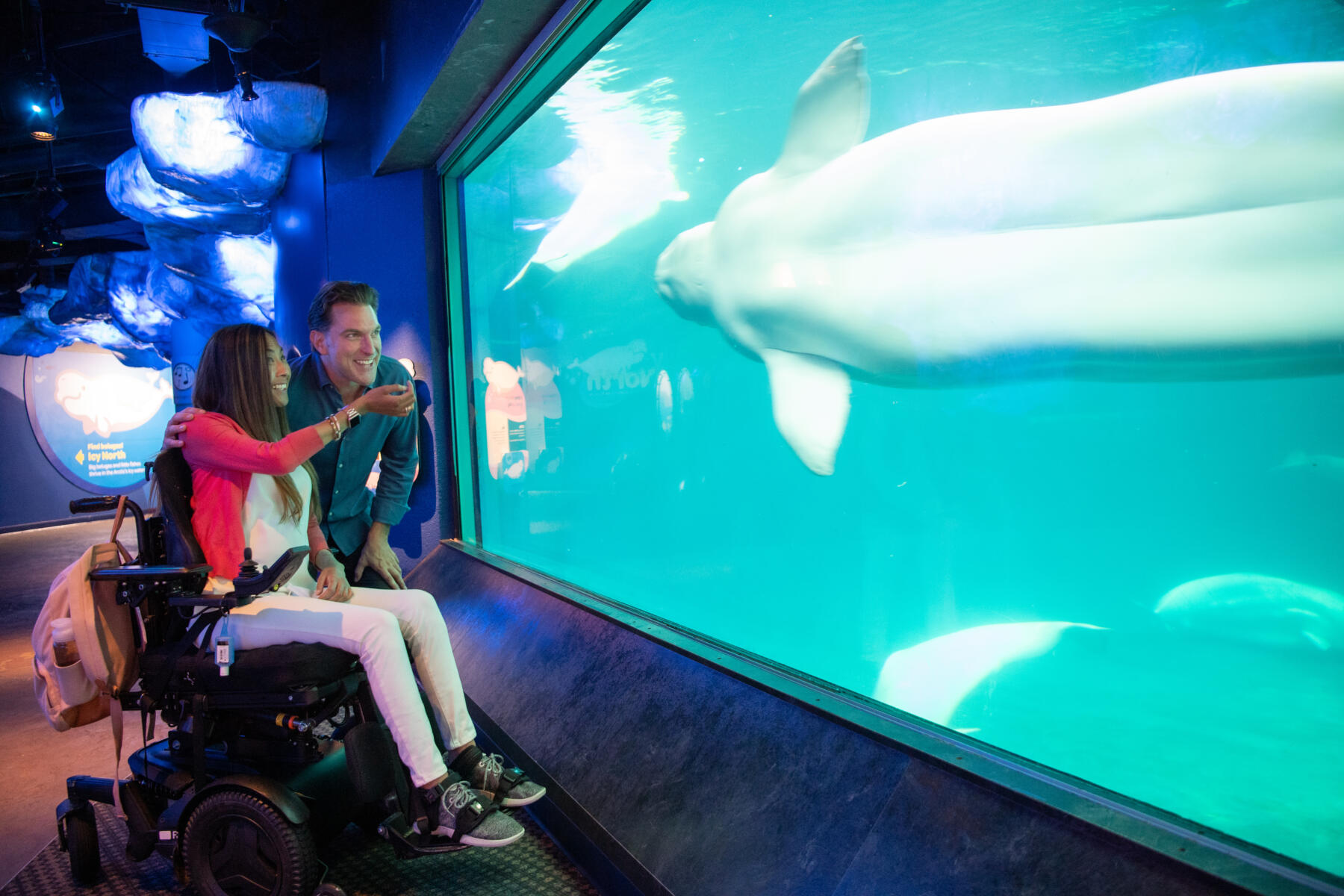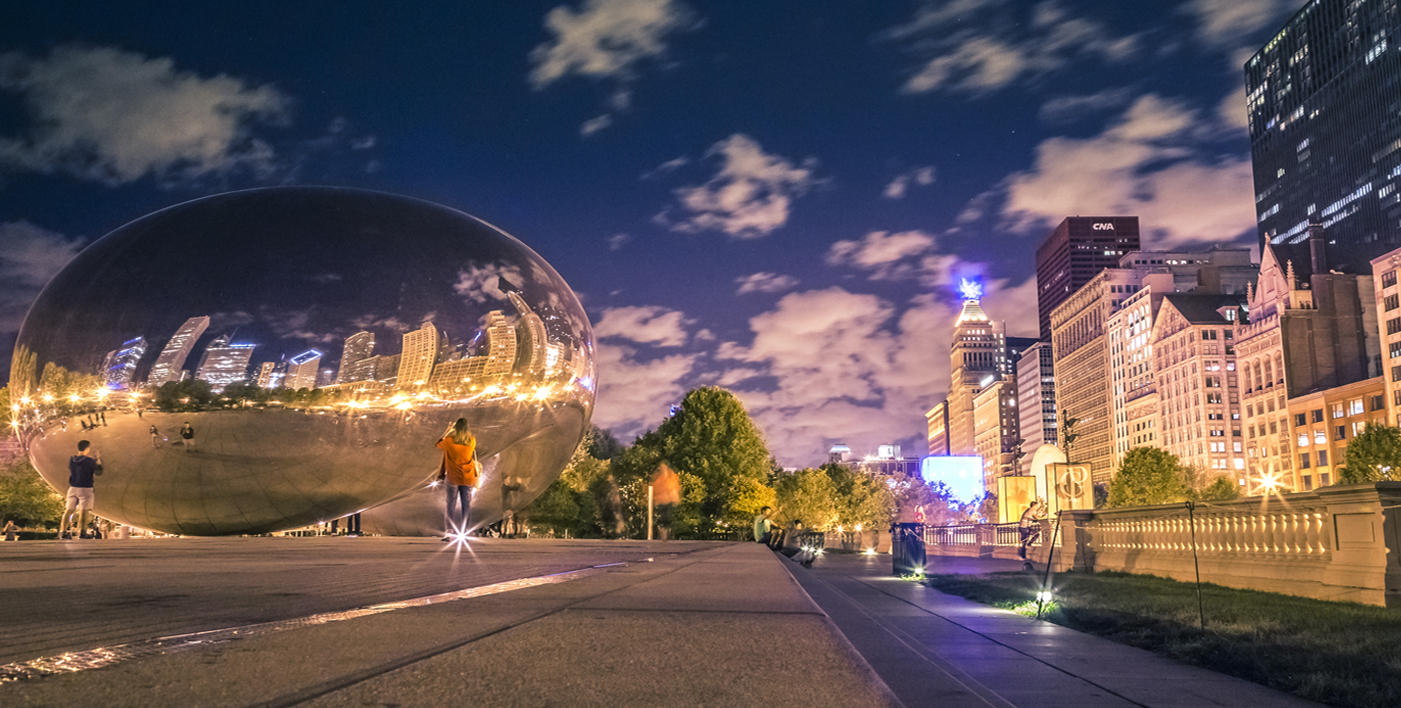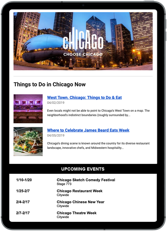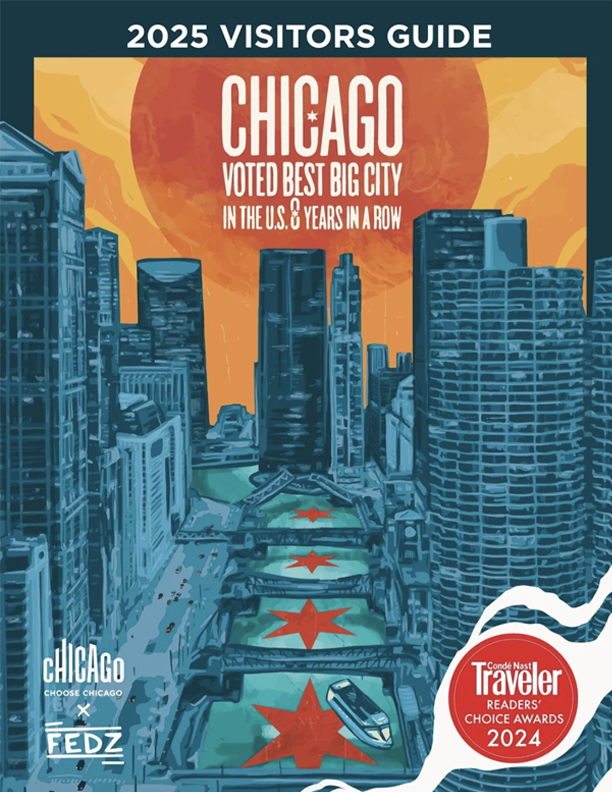Whether you’re a history buff, a science enthusiast, or an art lover, museums in Chicago offer so much to explore. After all, these cultural institutions are a reflection of our shared history, stories, and experiences.
Chicago’s museums serve as inclusive and welcoming spaces for all visitors, offering sensory-friendly exhibits, verbal description tours, assistive technology like teletypewriters, and more. Discover how the city’s top cultural institutions are building accessibility into the museum experience.
In this article
Field Museum
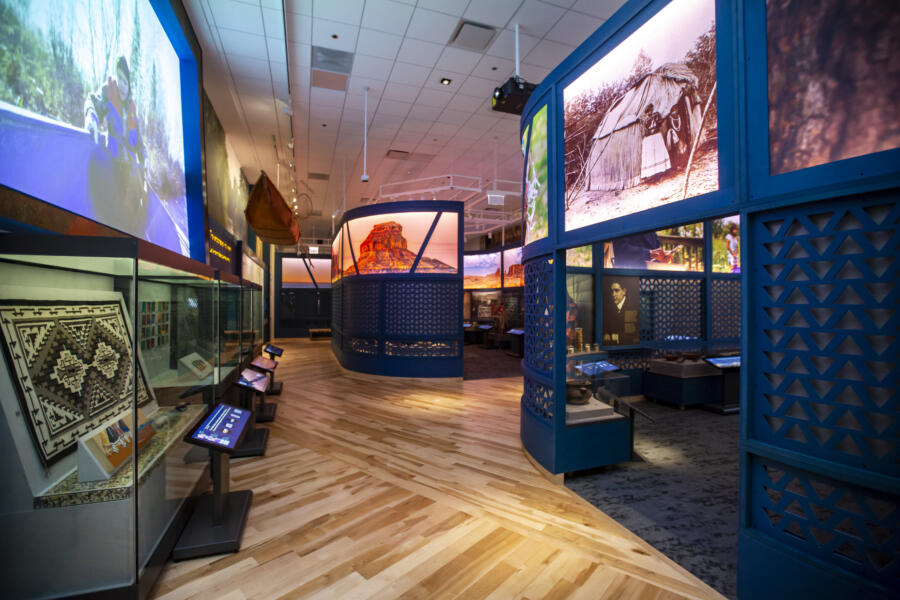
The South Loop’s Field Museum is a world-renowned natural history museum where visitors can explore the wonders of the globe — from South American prehistoric fossils to ancient Chinese artifacts — all in a single afternoon.
- Getting there: The East Museum Lot (main entrance on Museum Campus Drive) offers wheelchair-accessible paid parking spots on a first-come, first-served basis. When the lot is at capacity, the east end of the nearby Soldier Field north garage may have additional accessible parking spaces available.
- Getting around: Visitors can use elevators located at the main hall’s west and east sides to access all public levels of the building. The museum also has wheelchairs ready for use at both of its entrances.
- Sensory-friendly features: Available on iOS and Android, the free Field Museum for All mobile app allows guests to plan their visit using a sensory-friendly museum map, social guides, exhibition previews, customizable schedules, and other resources. The ground-level visitor center provides sensory bags, which include emotion cards, headphones, sunglasses, and a variety of fidget tools.
- Service animals: Trained service animals can access all public areas of the museum.
- Additional assistance: Individuals who may require an aide, personal accommodations, or extra services should contact the museum at least two days before their scheduled visit.
For more information, contact (312) 665-7959 (phone) or (312) 665-7669 (TTY), or email accessibility@fieldmuseum.org.
Learn more about accessibility at the Field Museum.
Museum of Science and Industry
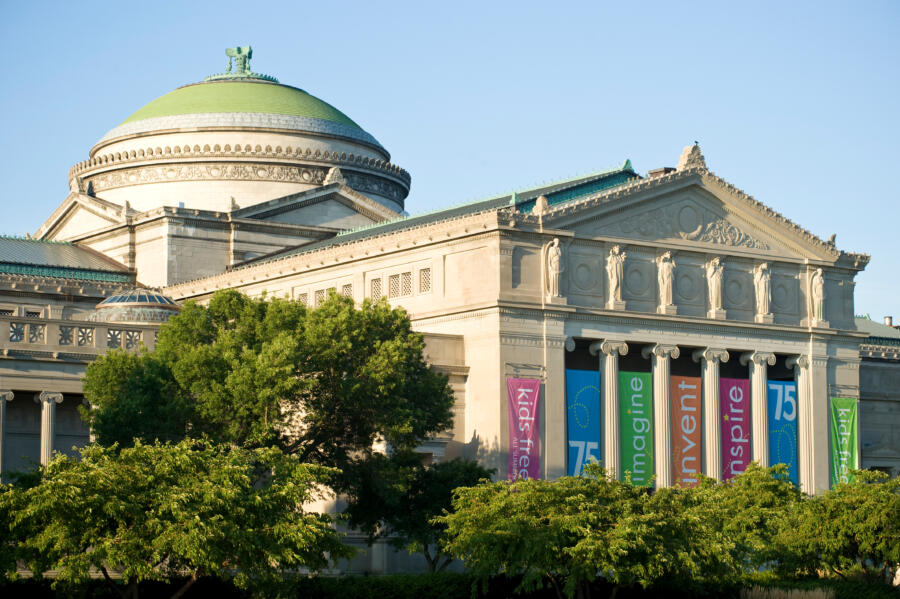
Recognized as the Western Hemisphere’s largest science museum, the Museum of Science and Industry in Hyde Park is an awe-inspiring technological playground. The institution boasts more than 35,000 artifacts and over 400,000 square feet of interactive exhibits.
- Getting there: Each garage section at the museum features accessible parking spots. The accessible Blue (D) section in the underground parking structure is able to accommodate oversize vehicles and vans. For ease of access, there’s an automated push-button door entrance to the museum located at the Blue (D) section. All parking levels have elevators that offer access to and from the entry hall.
- Getting around: Ramps and elevators stationed throughout the building provide access to every floor of the museum. In the Giant Dome Theater, visitors who use wheelchairs and accompanying guests have designated seating areas accessible by elevator. The museum also has courtesy manually operated wheelchairs available for use.
- Blind and low-vision services: Individuals may request sighted guides and review a brief summary of exhibits that feature low lighting. EnChroma glasses are on hand for visitors who have color vision deficiency, available on a first-come, first-served basis at the entry hall’s guest services area.
- Deaf and hard of hearing services: Guests can request American Sign Language (ASL) interpreters and scripts for Giant Dome Theater films, tours, and other programs.
- Sensory-friendly features: There’s a concise overview of exhibits, with notes on loud noises and bright lights, as well as a social narrative and general sensory notes about the museum experience. In addition, communication books and sensory maps are on offer in both English and Spanish. Visitors may also borrow noise-reducing headphones at no cost.
- Service animals: The museum allows service animals throughout the facility.
For more information, contact (773) 684-1414 (phone) or (773) 753-1351 (TTY), or submit a guest services request form.
Learn more about accessibility at the Museum of Science and Industry.
Art Institute of Chicago
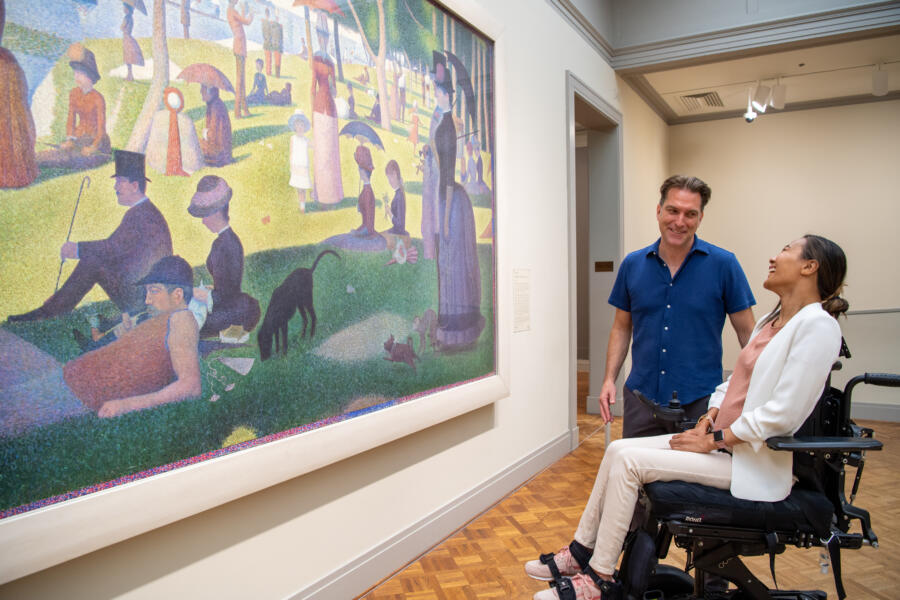
Nestled in the heart of downtown, the Art Institute of Chicago houses a collection of roughly 300,000 pieces of art spanning centuries and continents. Featured works by time-honored artists like Claude Monet, Georges Seurat, and Vincent van Gogh draw in around 1.5 million visitors every year.
- Getting there: Accessible parking is available at the Millennium Park garage (entrance at Columbus Drive and Monroe Street), the Grant Park north garage (entrance at Michigan Avenue between Randolph and Madison), and the East Monroe Street garage (entrance at Columbus Drive and Monroe Street), which has an exit ramp. Both of the former feature an elevator at the exit. A block from the Art Institute, the ground-level Adams/Wabash station is the ‘L’ stop for the Green, Brown, Purple, Orange, and Pink lines. Several bus lines stop at the museum as well.
- Getting around: Elevators allow access to every floor of the Art Institute, with all auditoriums offering designated wheelchair-accessible seating areas. At the admission counters, visitors can request a courtesy manual wheelchair to use on a first-come, first-served basis.
- Blind and low-vision services: TacTiles kits consist of highlights from the Art Institute’s collection represented on handheld tiles designed to be touched. Visitors can use the Art Institute’s free mobile app for audio tours and Verbal Description Tours of special exhibitions and the permanent collection.
- Deaf and hard of hearing services: Compatible with iOS and Android devices, the museum’s app supports Bluetooth audio output for a number of receivers, including hearing aids. Guests may also request printed transcripts of audio guides for special exhibits at the audio guide desk. Certain public lectures offer open or closed captioning options, and a complimentary assistive listening system with T-coil compatibility is available in every auditorium.
- Sensory-friendly features: In addition to a preview guide with a social narrative, the Art Institute offers a map of sensory-friendly spaces that tend to be less crowded and quieter than other parts of the museum.
- Service animals: Visitors can bring their service animals to the Art Institute.
For more information, contact (312) 857-7641 or email access@artic.edu.
Learn more about accessibility at the Art Institute of Chicago.
Adler Planetarium
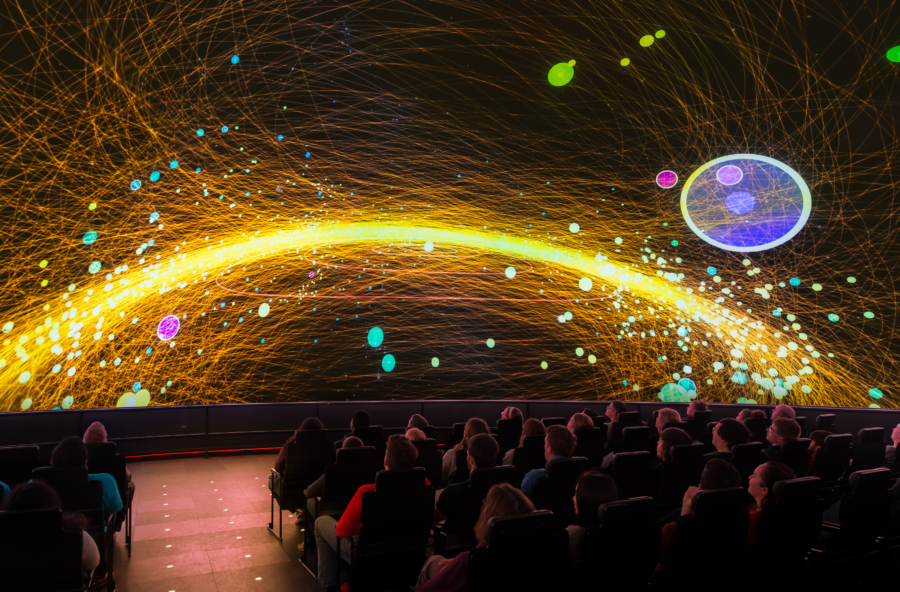
Established in 1930, South Loop’s Adler Planetarium is the country’s very first planetarium. At this storied institution, astrophysics and astronomy take center stage to inspire the next generation of space explorers and scientists.
- Getting there: Located next to the Adler Planetarium, the Chicago Park District‘s lot has wheelchair-accessible parking spaces. There’s also a U-shaped turnaround at the Adler entrance for dropping off passengers. Featuring automated push-button entryways, the accessible entrance of the museum is at the Leffmann Education Center, situated to the right of the planetarium’s main entrance.
- Getting around: Throughout the building, elevators offer guests access to each level of the museum. At the planetarium’s three theatres, there are designated seating areas for visitors using wheelchairs and their companions. Both of the museum box offices offer courtesy manually operated wheelchairs on a first-come, first-served basis.
- Deaf and hard of hearing services: Complimentary assisted listening devices are available in the Adler’s three theatres on a first-come, first-served basis for different shows and presentations. With the exception of the Skywatch Live! show, visitors can access closed captioning of narration with their own mobile devices. Theatre and box office attendants are on standby to assist guests with using the closed captioning feature.
- Service animals: The planetarium’s public spaces are generally open to service animals. However, in rare cases concerning health and safety protocols, service animals may not be allowed to enter specific areas of the Adler.
- Additional assistance: Contact the planetarium to arrange for any additional accommodations or services.
For more information, contact (312) 922-7827 or email guestservices@adlerplanetarium.org.
Learn more about accessibility at the Adler Planetarium.
Shedd Aquarium
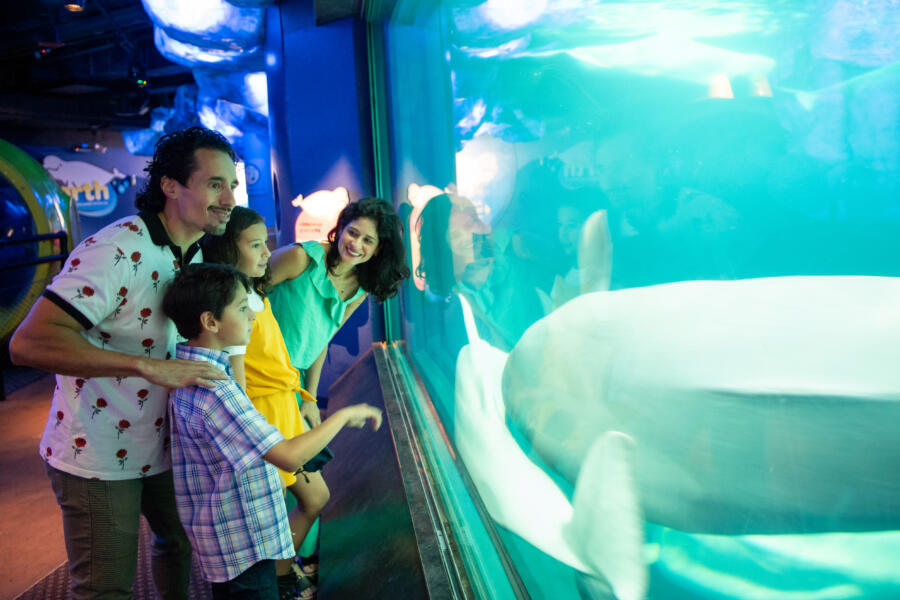
Committed to conservation, the Shedd Aquarium in the South Loop is an aquatic wonderland brimming with sea creatures and marine life galore, from dolphins and belugas to otters and penguins.
- Getting there: There’s accessible parking at the Soldier Field parking garage in addition to the small parking lot between the aquarium and the Field Museum. The bus turnaround at Shedd also functions as a drop-off spot near the accessible entrance on the aquarium’s southwest side. It’s recommended that visitors check Shedd’s traffic alerts page for updated information about parking.
- Getting around: At the information desk, visitors can borrow a wheelchair or rollator walker free of charge on a first-come, first-served basis. For Animal Spotlights in the Abbott Oceanarium amphitheater, there are designated wheelchair-accessible seating and companion chairs available. Penguin encounters and shark feeding tours are also accessible for wheelchair users.
- Blind and low-vision services: Throughout certain exhibits and zones, tactile models offer a playback of identifying information when a visitor touches the model. For 4D experiences, listening devices and recorded audio descriptions are usually available.
- Deaf and hard of hearing services: With advance notice of at least two weeks, the aquarium can arrange for an ASL interpreter, as well as aquatic presentations with real-time captions. The Phelps Auditorium also offers assistive-listening devices and closed captioning for 4D experiences. Additional listening locations include Must See Tours, animal chats, and Abbott Oceanarium. Staff at the membership desk and box office at the accessible entrance can assist with installing hearing loops.
- Sensory-friendly features: Available on iOS and Android devices, the free SensoryFriendly Shedd Aquarium app is a helpful planning tool that features customized schedules, exhibit previews, and a sensory-friendly aquarium map. In addition, the 4D theatre, information desk, and Abbott Oceanarium all carry complimentary headphones designed to reduce sound, which visitors can rent on a first-come, first-served basis.
- Service animals: For the most part, service animals are allowed at Shedd. However, due to health and safety reasons, the Coastal Walkway and specific behind-the-scenes locations of Extraordinary Experiences are off-limits to service animals. And unless the device interferes with their work, service animals must wear a harness, leash, or tether. Otherwise, the visitor has to be able to manage their service animal by using signals, vocal commands, or another method of control. These precautions are in place because the service animal could distress the aquarium animals.
For more information, contact (312) 939-2438 or email contactus@sheddaquarium.org.
Learn more about accessibility at Shedd Aquarium.
Chicago History Museum

The Chicago History Museum offers dynamic exhibits, tours, and special events that connect visitors to Chicago’s rich history. Exhibitions delve into the city’s jazz legacy, the Great Chicago Fire, the local impact of individuals like Martin Luther King Jr. and Abe Lincoln, and more.
- Getting there: Accessible parking and an elevator in the Museum’s garage at LaSalle and Stockton. Drop-offs are permitted at the main entrance on Clark Street. There are button-activated doors at the south end of the main entrance.
- Getting around: Public elevators operate between all floors of the museum. There are wide restroom stalls with grab bars, along with an accessible family restroom on the second floor. Wheelchairs are available free of charge.
- Blind and low-vision services: Large-print labels are displayed for select exhibitions. Verbal touch tours are available by appointment.
- Deaf and hard of hearing services: English and Spanish captions are available in most exhibition films. Portable assistive listening receivers with headphones are available for select programs. Sign language interpretation for public programs can be arranged with advanced notice.
- Service animals: Trained service animals can access all public areas of the museum.
For more information or to request accommodations, contact reception@chicagohistory.org.
Learn more about accessibility at the Chicago History Museum.
Museum of Contemporary Art
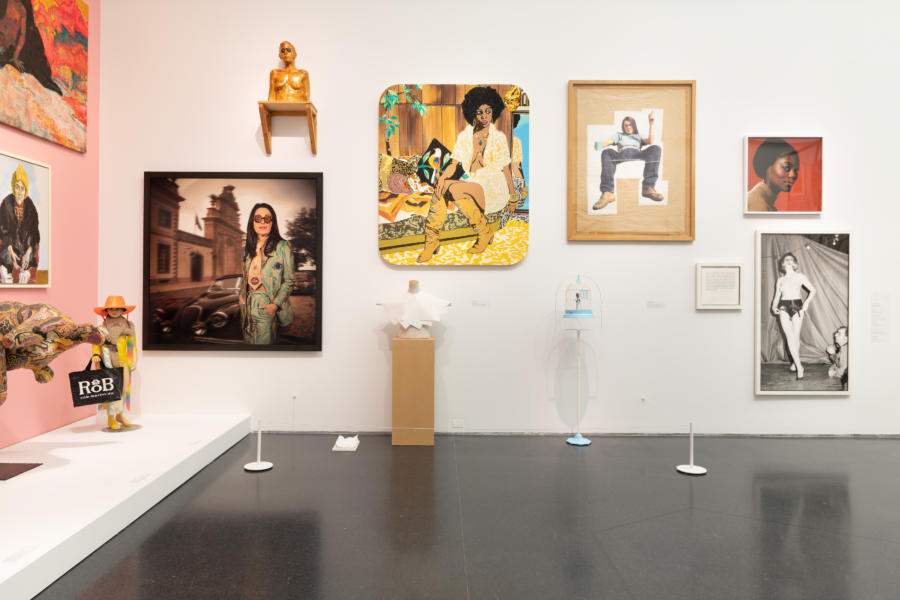
The Museum of Contemporary Art (MCA) in Streeterville serves as a beacon of innovation and community engagement. Showcasing the thought-provoking work of living artists, the MCA aims to provide an inspiring space where visitors can learn and grow.
- Getting there: Accessible paid parking spots are available at the museum’s parking garage on Chicago Avenue. Though there’s no direct museum access from the garage, the plaza-level accessible entrance is just around the corner of Chicago Avenue and Mies van der Rohe Way at the museum gift shop. Likewise, the MCA’s restaurant and Edlis Neeson Theater entrance are accessible as well, located at the edge of Mies van der Rohe Way and East Pearson Street.
- Getting around: The north elevator offers access to the galleries on the second, third, and fourth levels of the MCA, as well as the first-floor theatre, which has designated seating for visitors using wheelchairs. And the south elevator can take visitors to the second- and fourth-floor galleries. Courtesy wheelchairs are available to borrow on a first-come, first-served basis at the coat check counters.
- Blind and low-vision services: At the admissions desk, individuals can reserve large-print guides to navigate the MCA’s galleries. In addition to audio descriptions for theatre events, EnChroma glasses are on offer for visitors to use.
- Deaf and hard of hearing services: With advance notice, visitors may access open captioning, assistive listening devices, and sign language interpretation for tours, speaker series, and educational programs. These services are subject to availability for theatre performances and activities.
- Sensory-friendly features: Staff members are on hand to assist individuals with borrowing sensory kits.
- Service animals: The MCA permits service animals in the facility, including the theatre and gallery spaces.
For more information, contact (312) 280-2660 or email BoxOffice@mcachicago.org.
Learn more about accessibility at the Museum of Contemporary Art.
More accessible museums in Chicago
DuSable Black History Museum and Education Center
The DuSable Black History Museum is ADA compliant. Closed captioning, elevators, ramps, and accessible restrooms help make the museum more accessible to all. A limited number of wheelchairs are available on a first-come, first-served basis. Service animals are welcome.
National Museum of Mexican Art
The National Museum of Mexican Art is wheelchair accessible, with all the galleries and gift shop located on the main floor. The museum also offers a sensory-friendly app and sensory bags. The museum’s automatic doors, ramps, lowered labels, and smooth, even floors ensure a comfortable and inclusive experience for all visitors.

